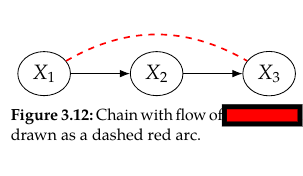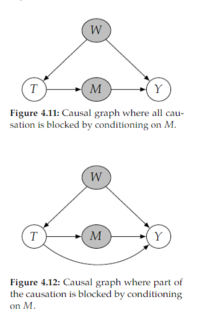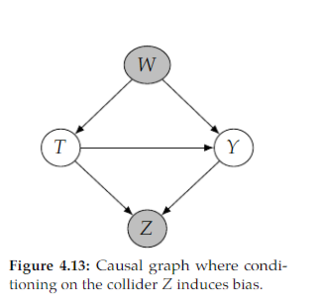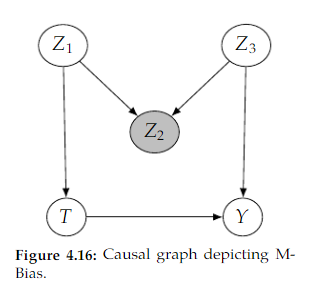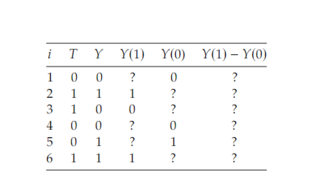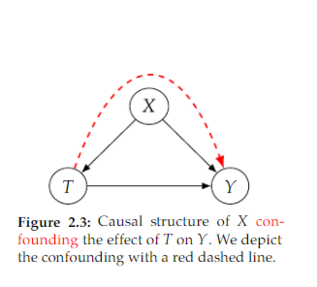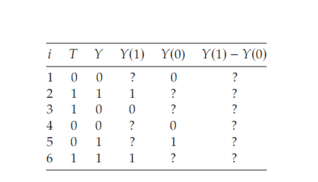Edited, memorised or added to reading queue
on 22-Apr-2022 (Fri)
Do you want BuboFlash to help you learning these things? Click here to log in or create user.
Flashcard 1377946963212
| status | not learned | measured difficulty | 37% [default] | last interval [days] | |||
|---|---|---|---|---|---|---|---|
| repetition number in this series | 0 | memorised on | scheduled repetition | ||||
| scheduled repetition interval | last repetition or drill |
Parent (intermediate) annotation
Open itmerely carrying out their normal public duty in ensuring the maintenance of law and order and, therefore, they had provided no consideration for the promise of the defendants to pay for those services. HELD: The responsibility of the club was <span>to take all reasonable steps to ensure that the game took place in conditions that did not occasion danger to any person or property. The attendance of the police was necessary to assist the club in the fulfilment of this duty, which went beyond the maintenance of law and order, and for which the club should pay.</sp
Original toplevel document (pdf)
cannot see any pdfs| status | not read | reprioritisations | ||
|---|---|---|---|---|
| last reprioritisation on | suggested re-reading day | |||
| started reading on | finished reading on |
| status | not read | reprioritisations | ||
|---|---|---|---|---|
| last reprioritisation on | suggested re-reading day | |||
| started reading on | finished reading on |
| status | not read | reprioritisations | ||
|---|---|---|---|---|
| last reprioritisation on | suggested re-reading day | |||
| started reading on | finished reading on |
| status | not read | reprioritisations | ||
|---|---|---|---|---|
| last reprioritisation on | suggested re-reading day | |||
| started reading on | finished reading on |
| status | not read | reprioritisations | ||
|---|---|---|---|---|
| last reprioritisation on | suggested re-reading day | |||
| started reading on | finished reading on |
| status | not read | reprioritisations | ||
|---|---|---|---|---|
| last reprioritisation on | suggested re-reading day | |||
| started reading on | finished reading on |
| status | not read | reprioritisations | ||
|---|---|---|---|---|
| last reprioritisation on | suggested re-reading day | |||
| started reading on | finished reading on |
| status | not read | reprioritisations | ||
|---|---|---|---|---|
| last reprioritisation on | suggested re-reading day | |||
| started reading on | finished reading on |
| status | not read | reprioritisations | ||
|---|---|---|---|---|
| last reprioritisation on | suggested re-reading day | |||
| started reading on | finished reading on |
| status | not read | reprioritisations | ||
|---|---|---|---|---|
| last reprioritisation on | suggested re-reading day | |||
| started reading on | finished reading on |
Flashcard 7071881628940
| status | not learned | measured difficulty | 37% [default] | last interval [days] | |||
|---|---|---|---|---|---|---|---|
| repetition number in this series | 0 | memorised on | scheduled repetition | ||||
| scheduled repetition interval | last repetition or drill |
| status | not read | reprioritisations | ||
|---|---|---|---|---|
| last reprioritisation on | suggested re-reading day | |||
| started reading on | finished reading on |
| status | not read | reprioritisations | ||
|---|---|---|---|---|
| last reprioritisation on | suggested re-reading day | |||
| started reading on | finished reading on |
| status | not read | reprioritisations | ||
|---|---|---|---|---|
| last reprioritisation on | suggested re-reading day | |||
| started reading on | finished reading on |
Flashcard 7071896571148
| status | not learned | measured difficulty | 37% [default] | last interval [days] | |||
|---|---|---|---|---|---|---|---|
| repetition number in this series | 0 | memorised on | scheduled repetition | ||||
| scheduled repetition interval | last repetition or drill |
Parent (intermediate) annotation
Open itWhen we say “estimation,” we are referring to the process of moving from a statistical estimand to an estimate
Original toplevel document (pdf)
cannot see any pdfsFlashcard 7071898406156
| status | not learned | measured difficulty | 37% [default] | last interval [days] | |||
|---|---|---|---|---|---|---|---|
| repetition number in this series | 0 | memorised on | scheduled repetition | ||||
| scheduled repetition interval | last repetition or drill |
Parent (intermediate) annotation
Open itAn estimand is the quantity that we want to estimate.
Original toplevel document (pdf)
cannot see any pdfs| status | not read | reprioritisations | ||
|---|---|---|---|---|
| last reprioritisation on | suggested re-reading day | |||
| started reading on | finished reading on |
| status | not read | reprioritisations | ||
|---|---|---|---|---|
| last reprioritisation on | suggested re-reading day | |||
| started reading on | finished reading on |
Parent (intermediate) annotation
Open itthe flow of association and causation in DAGs. We can understand this flow in general DAGs by understanding the flow in the minimal building blocks of graphs. The minimal building blocks of DAGs consist of chains (Figure 3.9a), forks (Figure 3.9b), immoralities (Figure 3.9c), two unconnected nodes (Figure 3.10), and two connected nodes (Figure 3.11)
Original toplevel document (pdf)
cannot see any pdfsFlashcard 7071905746188
| status | not learned | measured difficulty | 37% [default] | last interval [days] | |||
|---|---|---|---|---|---|---|---|
| repetition number in this series | 0 | memorised on | scheduled repetition | ||||
| scheduled repetition interval | last repetition or drill |
Parent (intermediate) annotation
Open itIf two parents 𝑋 and 𝑌 share some child 𝑍 , but there is no edge connecting 𝑋 and 𝑌 , then 𝑋 → 𝑍 ← 𝑌 is known as an immorality
Original toplevel document (pdf)
cannot see any pdfsFlashcard 7071908105484
| status | not learned | measured difficulty | 37% [default] | last interval [days] | |||
|---|---|---|---|---|---|---|---|
| repetition number in this series | 0 | memorised on | scheduled repetition | ||||
| scheduled repetition interval | last repetition or drill |
Parent (intermediate) annotation
Open itThe Bayesian network factorization is also known as the chain rule for Bayesian networks or Markov compatibility.
Original toplevel document (pdf)
cannot see any pdfsFlashcard 7071910464780
| status | not learned | measured difficulty | 37% [default] | last interval [days] | |||
|---|---|---|---|---|---|---|---|
| repetition number in this series | 0 | memorised on | scheduled repetition | ||||
| scheduled repetition interval | last repetition or drill |
Parent (intermediate) annotation
Open itConsistency is the assumption that the outcome we observe 𝑌 is actually the potential outcome under the observed treatment 𝑇
Original toplevel document (pdf)
cannot see any pdfsFlashcard 7071912299788
| status | not learned | measured difficulty | 37% [default] | last interval [days] | |||
|---|---|---|---|---|---|---|---|
| repetition number in this series | 0 | memorised on | scheduled repetition | ||||
| scheduled repetition interval | last repetition or drill |
Parent (intermediate) annotation
Open it(0) column, ignoring the question marks, and subtracting that from the average of the 𝑌(1) column, ignoring the question marks?” 6 This ignoring of the question marks (missing data) is known as <span>ignorability <span>
Original toplevel document (pdf)
cannot see any pdfsFlashcard 7071914396940
| status | not learned | measured difficulty | 37% [default] | last interval [days] | |||
|---|---|---|---|---|---|---|---|
| repetition number in this series | 0 | memorised on | scheduled repetition | ||||
| scheduled repetition interval | last repetition or drill |
Parent (intermediate) annotation
Open itThis non-causal association flows along the 𝑇 ← 𝑋 → 𝑌 path
Original toplevel document (pdf)
cannot see any pdfs| status | not read | reprioritisations | ||
|---|---|---|---|---|
| last reprioritisation on | suggested re-reading day | |||
| started reading on | finished reading on |
Parent (intermediate) annotation
Open itThe potential outcomes that you do not (and cannot) observe are known as counterfactuals because they are counter to fact (reality). “Potential outcomes” are sometimes referred to as “counterfactual outcomes,” but we will never do that in this book because a potential outcome 𝑌(𝑡) does not become counter to fact unt
Original toplevel document (pdf)
cannot see any pdfs| status | not read | reprioritisations | ||
|---|---|---|---|---|
| last reprioritisation on | suggested re-reading day | |||
| started reading on | finished reading on |
Parent (intermediate) annotation
Open itAn “estimator” is a function that takes a dataset as input and outputs an estimate. We discuss this statistics terminology more in Section 2.4. That’s the math for why we need the positivity assumption, but what’s the intuition? Well, if we have a positivity violation,
Original toplevel document (pdf)
cannot see any pdfsFlashcard 7071920688396
| status | not learned | measured difficulty | 37% [default] | last interval [days] | |||
|---|---|---|---|---|---|---|---|
| repetition number in this series | 0 | memorised on | scheduled repetition | ||||
| scheduled repetition interval | last repetition or drill |
Parent (intermediate) annotation
Open itThe Fundamental Problem of Causal Inference: It is impossible to observe all potential outcomes for a given individual
Original toplevel document (pdf)
cannot see any pdfsFlashcard 7071922523404
| status | not learned | measured difficulty | 37% [default] | last interval [days] | |||
|---|---|---|---|---|---|---|---|
| repetition number in this series | 0 | memorised on | scheduled repetition | ||||
| scheduled repetition interval | last repetition or drill |
Parent (intermediate) annotation
Open itConditional exchangeability is the main assumption necessary for causal inference. Armed with this assumption, we can identify the causal effect within levels of 𝑋
Original toplevel document (pdf)
cannot see any pdfs| status | not read | reprioritisations | ||
|---|---|---|---|---|
| last reprioritisation on | suggested re-reading day | |||
| started reading on | finished reading on |
Parent (intermediate) annotation
Open itThe Positivity-Unconfoundedness Tradeoff Although conditioning on more covariates could lead to a higher chance of satisfying unconfoundedness, it can lead to a higher chance of violating positivity. As we increase the dimensi
Original toplevel document (pdf)
cannot see any pdfs| status | not read | reprioritisations | ||
|---|---|---|---|---|
| last reprioritisation on | suggested re-reading day | |||
| started reading on | finished reading on |
| status | not read | reprioritisations | ||
|---|---|---|---|---|
| last reprioritisation on | suggested re-reading day | |||
| started reading on | finished reading on |
| status | not read | reprioritisations | ||
|---|---|---|---|---|
| last reprioritisation on | suggested re-reading day | |||
| started reading on | finished reading on |
Parent (intermediate) annotation
Open itTo identify a causal effect is to reduce a causal expression to a purely statistical expression. In this chapter, that means to reduce an expression from one that uses potential outcome notation to one that uses only statistical notation such as 𝑇 , 𝑋 , 𝑌 , expectations, and condit
Original toplevel document (pdf)
cannot see any pdfsFlashcard 7071934319884
| status | not learned | measured difficulty | 37% [default] | last interval [days] | |||
|---|---|---|---|---|---|---|---|
| repetition number in this series | 0 | memorised on | scheduled repetition | ||||
| scheduled repetition interval | last repetition or drill |
Parent (intermediate) annotation
Open itTo identify a causal effect is to reduce a causal expression to a purely statistical expression.
Original toplevel document (pdf)
cannot see any pdfs| status | not read | reprioritisations | ||
|---|---|---|---|---|
| last reprioritisation on | suggested re-reading day | |||
| started reading on | finished reading on |
Parent (intermediate) annotation
Open itThe main reason for moving from exchangeability (Assumption 2.1) to conditional exchangeability (Assumption 2.2) was that it seemed like a more realistic assumption. However, we often cannot know for certain if conditional exchangeability holds. There may be some unobserved confounders that are not part of 𝑋 , meaning conditional exchangeability is
Original toplevel document (pdf)
cannot see any pdfsFlashcard 7071938776332
| status | not learned | measured difficulty | 37% [default] | last interval [days] | |||
|---|---|---|---|---|---|---|---|
| repetition number in this series | 0 | memorised on | scheduled repetition | ||||
| scheduled repetition interval | last repetition or drill |
Parent (intermediate) annotation
Open itreason to expect that the groups are the same in all relevant variables other than the treatment. However, if we control for relevant variables by conditioning, then maybe the subgroups will be <span>exchangeable. We will clarify what the “relevant variables” are in Chapter 3, <span>
Original toplevel document (pdf)
cannot see any pdfsFlashcard 7071941659916
| status | not learned | measured difficulty | 37% [default] | last interval [days] | |||
|---|---|---|---|---|---|---|---|
| repetition number in this series | 0 | memorised on | scheduled repetition | ||||
| scheduled repetition interval | last repetition or drill |
Parent (intermediate) annotation
Open itAssumption 3.2 (Minimality Assumption) 1. Given its parents in the DAG, a node 𝑋 is independent of all its non-descendants (Assumption 3.1). 2. Adjacent nodes in the DAG are dependent.
Original toplevel document (pdf)
cannot see any pdfsFlashcard 7071945329932
| status | not learned | measured difficulty | 37% [default] | last interval [days] | |||
|---|---|---|---|---|---|---|---|
| repetition number in this series | 0 | memorised on | scheduled repetition | ||||
| scheduled repetition interval | last repetition or drill |
Parent (intermediate) annotation
Open itAnswer: association
Original toplevel document (pdf)
cannot see any pdfsFlashcard 7071947164940
| status | not learned | measured difficulty | 37% [default] | last interval [days] | |||
|---|---|---|---|---|---|---|---|
| repetition number in this series | 0 | memorised on | scheduled repetition | ||||
| scheduled repetition interval | last repetition or drill |
Parent (intermediate) annotation
Open itAn estimate (noun) is an approximation of some estimand, which we get using data
Original toplevel document (pdf)
cannot see any pdfsFlashcard 7071949262092
| status | not learned | measured difficulty | 37% [default] | last interval [days] | |||
|---|---|---|---|---|---|---|---|
| repetition number in this series | 0 | memorised on | scheduled repetition | ||||
| scheduled repetition interval | last repetition or drill |
Parent (intermediate) annotation
Open itAssumption 3.1 (Local Markov Assumption) Given its parents in the DAG, a node 𝑋 is independent of all its non-descendants
Original toplevel document (pdf)
cannot see any pdfs| status | not read | reprioritisations | ||
|---|---|---|---|---|
| last reprioritisation on | suggested re-reading day | |||
| started reading on | finished reading on |
Parent (intermediate) annotation
Open itExchangeability means that the treatment groups are exchangeable in the sense that if they were swapped, the new treatment group would observe the same outcomes as the old treatment group, and the new control group would observe the same outcomes as the old control group.
Original toplevel document (pdf)
cannot see any pdfsFlashcard 7071952669964
| status | not learned | measured difficulty | 37% [default] | last interval [days] | |||
|---|---|---|---|---|---|---|---|
| repetition number in this series | 0 | memorised on | scheduled repetition | ||||
| scheduled repetition interval | last repetition or drill |
Parent (intermediate) annotation
Open itExchangeability means that the treatment groups are exchangeable in the sense that if they were swapped, the new treatment group would observe the same outcomes as the old treatment group
Original toplevel document (pdf)
cannot see any pdfsFlashcard 7071954504972
| status | not learned | measured difficulty | 37% [default] | last interval [days] | |||
|---|---|---|---|---|---|---|---|
| repetition number in this series | 0 | memorised on | scheduled repetition | ||||
| scheduled repetition interval | last repetition or drill |
Parent (intermediate) annotation
Open itassociated (due to confounding), within levels of 𝑋 , they are not associated. In other words, there is no confounding within levels of 𝑋 because controlling for 𝑋 has made the treatment groups <span>comparable. <span>
Original toplevel document (pdf)
cannot see any pdfs| status | not read | reprioritisations | ||
|---|---|---|---|---|
| last reprioritisation on | suggested re-reading day | |||
| started reading on | finished reading on |
| status | not read | reprioritisations | ||
|---|---|---|---|---|
| last reprioritisation on | suggested re-reading day | |||
| started reading on | finished reading on |
Parent (intermediate) annotation
Open itNo interference means that my outcome is unaffected by anyone else’s treatment. Rather, my outcome is only a function of my own treatment. We’ve been using this assumption implicitly throughout this chapter. We’ll now formalize it. Assumption 2.4 (No Interference)
Original toplevel document (pdf)
cannot see any pdfsFlashcard 7071959747852
| status | not learned | measured difficulty | 37% [default] | last interval [days] | |||
|---|---|---|---|---|---|---|---|
| repetition number in this series | 0 | memorised on | scheduled repetition | ||||
| scheduled repetition interval | last repetition or drill |
Parent (intermediate) annotation
Open itNo interference means that my outcome is unaffected by anyone else’s treatment.
Original toplevel document (pdf)
cannot see any pdfs| status | not read | reprioritisations | ||
|---|---|---|---|---|
| last reprioritisation on | suggested re-reading day | |||
| started reading on | finished reading on |
Parent (intermediate) annotation
Open itBy “flow of association,” we mean whether any two nodes in a graph are associated or not associated. Another way of saying this is whether two nodes are (statistically) dependent or (statistically) independent. Additionally, we will study whether two nodes are conditionally independent or not.
Original toplevel document (pdf)
cannot see any pdfsFlashcard 7071964204300
| status | not learned | measured difficulty | 37% [default] | last interval [days] | |||
|---|---|---|---|---|---|---|---|
| repetition number in this series | 0 | memorised on | scheduled repetition | ||||
| scheduled repetition interval | last repetition or drill |
Parent (intermediate) annotation
Open itIt turns out that much of the work for causal graphical models was done in the field of probabilistic graphical models. Probabilistic graphical models are statistical models while causal graphical models are causal models.
Original toplevel document (pdf)
cannot see any pdfsFlashcard 7071966825740
| status | not learned | measured difficulty | 37% [default] | last interval [days] | |||
|---|---|---|---|---|---|---|---|
| repetition number in this series | 0 | memorised on | scheduled repetition | ||||
| scheduled repetition interval | last repetition or drill |
Parent (intermediate) annotation
Open itAssumptions of causal inference: 1. Unconfoundedness (Assumption 2.2) 2. Positivity (Assumption 2.3) 3. No interference (Assumption 2.4) 4. Consistency (Assumption 2.5)
Original toplevel document (pdf)
cannot see any pdfs| status | not read | reprioritisations | ||
|---|---|---|---|---|
| last reprioritisation on | suggested re-reading day | |||
| started reading on | finished reading on |
| status | not read | reprioritisations | ||
|---|---|---|---|---|
| last reprioritisation on | suggested re-reading day | |||
| started reading on | finished reading on |
Flashcard 7071972592908
| status | not learned | measured difficulty | 37% [default] | last interval [days] | |||
|---|---|---|---|---|---|---|---|
| repetition number in this series | 0 | memorised on | scheduled repetition | ||||
| scheduled repetition interval | last repetition or drill |
Parent (intermediate) annotation
Open itWe will take this table as the whole population of interest. Because of the fundamental problem of causal inference, this is fundamentally a missing data problem. All of the question marks in the table indicate that we do not observe that cell.
Original toplevel document (pdf)
cannot see any pdfsFlashcard 7071974690060
| status | not learned | measured difficulty | 37% [default] | last interval [days] | |||
|---|---|---|---|---|---|---|---|
| repetition number in this series | 0 | memorised on | scheduled repetition | ||||
| scheduled repetition interval | last repetition or drill |
Parent (intermediate) annotation
Open itWe have seen that ignorability is extremely important (Equation 2.3), but how realistic of an assumption is it? In general, it is completely unrealistic because there is likely to be confounding in most data we obser
Original toplevel document (pdf)
cannot see any pdfsFlashcard 7071977311500
| status | not learned | measured difficulty | 37% [default] | last interval [days] | |||
|---|---|---|---|---|---|---|---|
| repetition number in this series | 0 | memorised on | scheduled repetition | ||||
| scheduled repetition interval | last repetition or drill |
Parent (intermediate) annotation
Open itPositivity is the condition that all subgroups of the data with different covariates have some probability of receiving any value of treatment
Original toplevel document (pdf)
cannot see any pdfsFlashcard 7071979146508
| status | not learned | measured difficulty | 37% [default] | last interval [days] | |||
|---|---|---|---|---|---|---|---|
| repetition number in this series | 0 | memorised on | scheduled repetition | ||||
| scheduled repetition interval | last repetition or drill |
Parent (intermediate) annotation
Open itThe idea is that although the treatment and potential outcomes may be unconditionally associated (due to confounding), within levels of 𝑋 , they are not associated
Original toplevel document (pdf)
cannot see any pdfsFlashcard 7071982292236
| status | not learned | measured difficulty | 37% [default] | last interval [days] | |||
|---|---|---|---|---|---|---|---|
| repetition number in this series | 0 | memorised on | scheduled repetition | ||||
| scheduled repetition interval | last repetition or drill |
Parent (intermediate) annotation
Open itWe get the average treatment effect (ATE) by taking an average over the ITEs: 𝜏 , 𝔼[𝑌 𝑖 (1) − 𝑌 𝑖 (0)] = 𝔼[𝑌(1) − 𝑌(0)] , where the average is over the individuals 𝑖 if 𝑌 𝑖 (𝑡) is deterministic. If 𝑌 𝑖 (𝑡) is random, the
